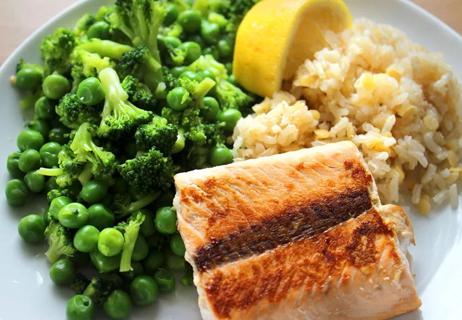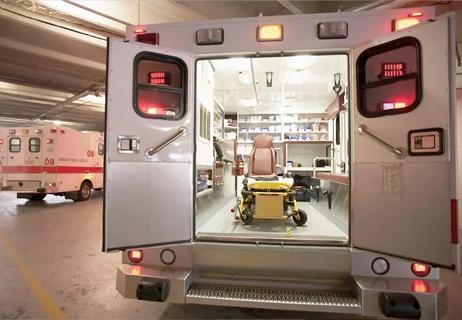Your age, the type of stroke you had, the cause and the location can all impact your recovery

After you've had a stroke, you’re likely to experience some physical or mental complications. Those complications could be minor or major, temporary or permanent. Some are a direct result of the stroke. Others are a result of physical or cognitive changes the stroke caused.
Advertisement
Cleveland Clinic is a non-profit academic medical center. Advertising on our site helps support our mission. We do not endorse non-Cleveland Clinic products or services. Policy
Neurologist Sidonie Ibrikji, MD, breaks down the 14 most common complications people encounter in the aftermath of a stroke and offers tips for managing your symptoms.
“Each and every stroke is different. Recovery depends on a lot of factors, including the size and location of the stroke, its cause and the age of the patient,” Dr. Ibrikji says.
There are two different kinds of stroke: ischemic and hemorrhagic.
Ischemic strokes happen when a blood vessel in your brain develops a clot and cuts off the blood supply to a part of your brain. This describes about 87% of strokes. Cholesterol plaques are frequently the cause of the blockage. They’re a common complication of high blood pressure, high cholesterol levels, diabetes and smoking, among other risk factors. But the clot doesn’t always originate in your brain. It can also dislodge from your heart or, less frequently, from somewhere else (like your leg) and travel through the blood vessels into your brain.
A hemorrhagic stroke occurs when a weakened blood vessel in your brain ruptures. A hemorrhage (bleeding from the blood vessel) happens suddenly. Sometimes, the bleeding doesn’t happen in your brain; it happens in the subarachnoid, subdural or epidural space. Those are the spaces in between your brain, its outer covering and your skull.
Advertisement
In the aftermath of a stroke, it’s important to stay attuned to what’s happening in your body and mind. Even seemingly minor complications, like headaches, deserve attention.
No matter what symptoms you’re experiencing, it’s important to notify your provider. It’s their job to monitor and treat any issue that arises in the aftermath of your stroke. Informing them of any changes in your health will also help them prevent another stroke.
Brain swelling (cerebral edema) happens when fluid builds up in your brain. The resulting pressure can restrict the amount of blood and oxygen it gets.
This is an extremely dangerous complication that requires immediate medical attention. Luckily, the symptoms are dramatic enough that they’re pretty hard to miss. They also usually happen within the first three to five days of a stroke, when you’re still in the hospital. The symptoms include:
When you’re in the hospital or immobile for a long time, you’re at risk of developing a blood clot, most commonly in your legs or your lungs. And depending on what caused your stroke, you may already have a greater risk of developing blood clots.
The most immediate concern in the aftermath of a stroke is a condition called deep vein thrombosis (DVT). Basically, a clot develops in a deep vein in your body, potentially blocking the return of blood flow to your heart. Symptoms of DVT include swelling in a leg or arm. Pain, redness and warm skin may also happen.
DVT itself isn’t life-threatening, but a clot may break free and travel through your bloodstream. If it lodges in the blood vessels of your lungs, this causes a life-threatening condition called pulmonary embolism. Symptoms of a pulmonary embolism include palpitations, shortness of breath, chest pain and low oxygen levels.
Your doctor may prescribe anticoagulant medication (a blood thinner) to help reduce the risk of clotting. If you're on blood thinners, try to avoid cuts and other injuries that could cause bleeding.
Damage to parts of your brain responsible for language may cause aphasia. This condition impairs the expression and understanding of language, as well as reading and writing. Aphasia may occur along with other disorders that impact speech, like apraxia (being unable to perform tasks that were familiar before the stroke) and dysarthria (difficulty speaking).
Advertisement
A speech-language pathologist will devise a therapy plan for you and your family. This may involve word boards, electronic devices and other methods to help improve communication.
The same muscle issues that cause trouble speaking in the aftermath of a stroke can also cause swallowing difficulties.
Symptoms of a swallowing problem can vary from person to person, Dr. Ibrikji says. All of the following symptoms fall under the dysphagia umbrella:
Minor cases of dysphagia can resolve on their own with short-term lifestyle changes, like taking smaller bites of food and sips of water and sitting up straight when eating or drinking. For more severe dysphagia, your healthcare provider may recommend swallowing therapy. You may even need to receive food through a feeding tube while your body is being retrained.
Pneumonia doesn’t seem like a typical stroke complication, but it’s actually quite common. It’s a result of dysphagia. When somebody’s having trouble swallowing, it’s common to aspirate food and liquids. That aspirated material can go to your lungs and cause inflammation.
Advertisement
According to Dr. Ibrikji, it’s important to prevent aspiration. You can do that in two ways:
If you do develop aspiration pneumonia, a common treatment is antibiotics, followed by a combination of respiratory and swallowing therapy.
In some cases, a stroke damages the parts of the brain that govern bladder and bowel function. In other cases, stroke side effects — like difficulty moving and communicating — make it harder to get to the bathroom in time. Bowel and bladder complications can, in turn leave you vulnerable to urinary tract infections (UTIs), fecal impaction and other gastrointestinal concerns.
The most common bladder problems post-stroke are:
The most common bowel problems post-stroke are:
Advertisement
These issues can be difficult to talk about, but Dr. Ibrikji explains that it’s important to talk to your healthcare provider about any urinary or bowel complications you’re experiencing. There’s almost always something that can be done, either to improve your physical condition or your quality of life. For example, your provider can prescribe medications, occupational therapy, pelvic floor therapy or bladder retraining. They can also suggest lifestyle changes that will help you improve your bladder and bowel control.
Depending on the location of the stroke you have, you may experience seizures, which occur when your brain sends a burst of abnormal electrical signals all at once.
Most of the time, seizures occur shortly after severe hemorrhagic strokes, or any stroke located in the cerebral cortex. That’s the higher-level part of your brain that controls movement, thinking, vision and emotions. It’s possible that a stroke-related seizure could occur years later, but seizures can happen to anybody at any time, so it’s hard to know for sure if a past stroke is responsible.
If you have multiple seizures over an extended period of time, you may be diagnosed with epilepsy. While unnerving, over 150,000 new epilepsy cases are diagnosed every year — and about 65 million people worldwide have the condition. The good news is that the majority of people diagnosed with epilepsy can manage it with medication and the help of their provider.
This complication is more common in those who’ve had a hemorrhagic stroke. That’s because blood from the hemorrhage may irritate your brain as it gets reabsorbed. Dr. Ibrikji urges you not to take over-the-counter medications without consulting with your doctor first. They’ll likely refer you to a headache clinic.
If your ability to move is compromised by a stroke, it’s important that your caregiver is aware of the risk of bedsores. Bedsores are wounds caused by prolonged pressure on the skin, usually because a person can’t move for an extended period. Common locations for bedsores include the lower back, heels and shoulders.
In addition to being painful, bedsores can become infected, so it’s important to be proactive about prevention. Dr. Ibrikji recommends the following:
According to Dr. Ibrikji, you may develop muscle tightness and pain in your leg or arm muscles in the aftermath of a stroke, also known as spasticity. It can happen soon after your stroke or develop months later. The symptoms of spasticity include pain and inability to properly use or take care of the affected limb.
A physical therapist likely will recommend stretching and other exercises. They may also suggest splinting or bracing. Based on an evaluation of your spasticity, your doctor may also inject botulinum toxin into the muscles to reduce involuntary muscle tightening and pain.
Like bedsores, limb contracture in people recovering from a stroke is usually the result of extended immobility. Essentially, your connective tissue — your muscles, ligaments and tendons — gets smaller and stiffer from underuse. The result is a reduced range of motion and, in some cases, pain.
If you’re experiencing limb contracture, it’s important to explain your symptoms to your specialist. They’ll likely prescribe physical or occupational therapy to restore your range of motion. They may also prescribe medications or give you devices (like casts or splints) that gently stretch the contracted areas. Severe cases of limb contracture may require surgery.
Weirdly specific, isn’t it? According to the American Stroke Association, as many as 84% of stroke survivors experience shoulder pain. The pain is caused by general muscle weakness and subluxation, which is a partial dislocation of the joint.
If you’re experiencing discomfort in one or both shoulders, let your healthcare provider know. The diagnostic process is simple and there are several different treatment approaches they can recommend, depending on what’s causing your pain.
Balance issues, mobility problems, dizziness, limb contracture and spasticity can all raise the risk of falling. In fact, falls are one of the most common issues people experience in the aftermath of a stroke. Seven percent of people sustain falls in the first week following a stroke and 73% fall within the first year of being discharged from the hospital.
But there’s good news: As the likelihood of falling goes up for all of us as we get older, there are a lot of risk assessments, treatment options, assistive devices and lifestyle tips available to prevent falls. Talk to your provider about any concerns you have on this topic. They’ll help you figure out the best approach for your unique situation.
“Depression is a treatable condition that can accompany or follow a stroke. I think it’s under-diagnosed,” Dr. Ibrikji notes.
After a stroke, you may have memory lapses and difficulty sleeping. You may also struggle to resume enjoyable activities alone or with your family and friends. These factors may contribute to feelings of sadness, worthlessness and lack of energy.
You may also experience irritability, apathy and uncontrolled expressions of emotions.
Your doctor may suggest counseling or prescribe an antidepressant. Dr. Ibrikji encourages her patients to join a stroke support group, especially if they’re experiencing symptoms of depression.
"It’s a good avenue to listen to other stroke survivors’ experiences. It’s very therapeutic,” she says.
Even what’s considered a minor stroke can be a major life event. Whether or not you’re contending with physical and cognitive issues in the aftermath, it’s important to get the support you need to move forward with confidence.
With the help of your loved ones and healthcare provider, you can navigate any complications you experience. And remember: Organizations like the American Stroke Association exist to share information and connect you to people and resources that can help
Difficult as stroke recovery can be, you’re not in it alone.
Learn more about our editorial process.
Advertisement

Seek immediate medical attention for sudden loss of balance, vision changes, slurring, facial droopiness and limb weakness

Strokes in the left side of the brain are more common and the effects are typically more noticeable

It can be overwhelming, but habit changes help lower your risk of another stroke

Hormonal changes and pregnancy are some factors unique to women

The short answer from a cerebrovascular expert

What you eat may protect you from a ‘brain attack’

Know the warning signs + decrease your risk

The short answer from a vascular neurologist

If you’re feeling short of breath, sleep can be tough — propping yourself up or sleeping on your side may help

If you fear the unknown or find yourself needing reassurance often, you may identify with this attachment style

If you’re looking to boost your gut health, it’s better to get fiber from whole foods